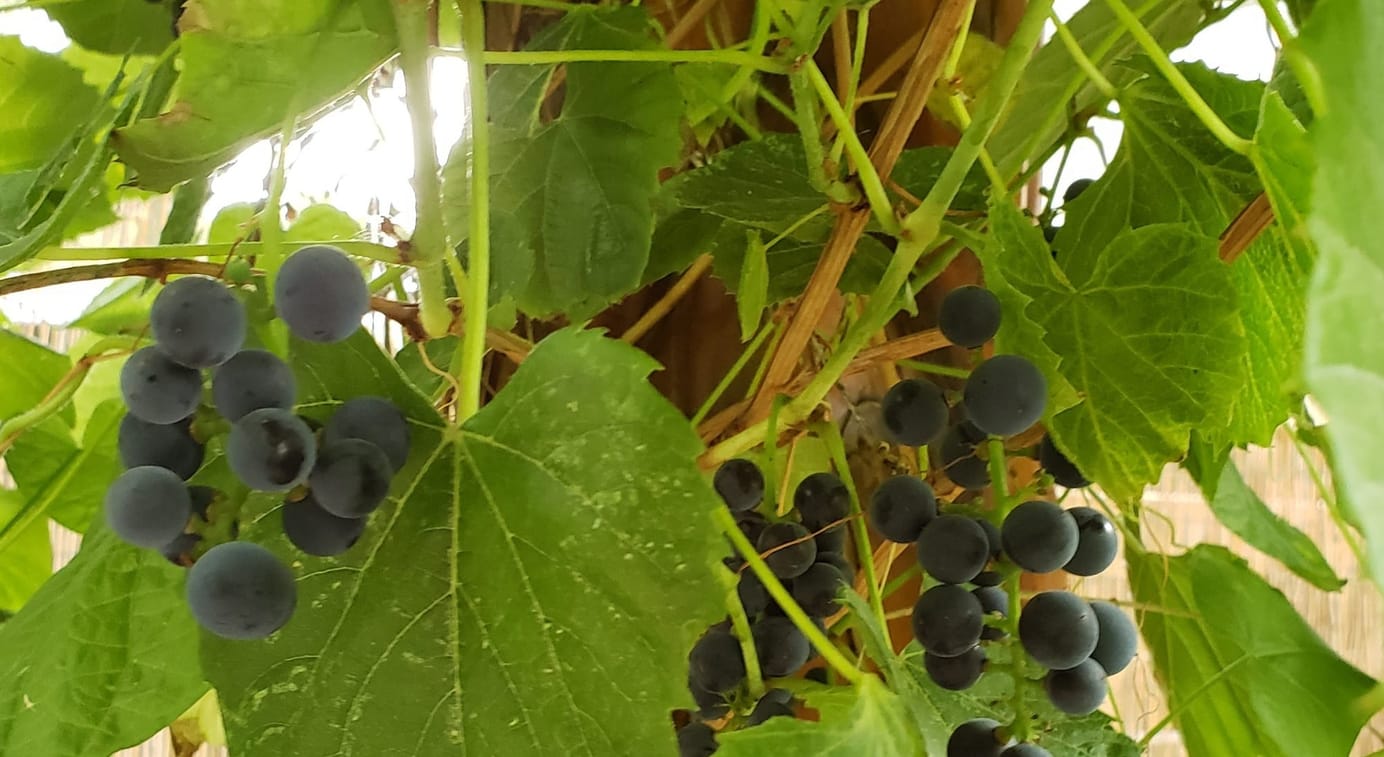
Growing grapes part i
Tips for choosing and growing grape varieties suited to northern climates.
By Patricia Hanbidge
October 20,2025
key points from this story:
- Vertical gardening increases yield
- Northern grapes bred for cold climates
- University of Minnesota leads research
- Valiant grape survives -35°C
- Grapes need full sun and drainage
- Part II coming next week
Sometimes at the end of the growing season, I pause and reflect on what worked well and what worked less well. As growing space is always limited, I like to ensure that I am growing up to maximize how much space I actually have for growth. This past year, I am happy with what I grew vertically. Going vertical is even better if we can also enjoy what the vines produce. Lucky for us there are many types of grapes that we can grow that have been specifically bred for growth in Northern climates.
As everything else we grow in our gardens, we want to give some thought to what we are going to do with the fruit we are growing. Are you growing grapes purely for the ornamental value or do you wish to have wonderful grapes for fresh eating? Better yet, do you want to process these fruits into preserves or even into wine? Many of the newer hardy grape varieties are developed at the University of Minnesota wine grape research program. In this program, researchers evaluate hundreds of wines produced from experimental grape varieties each year with the hope of identifying hybrids with superior wine quality potential. This program also supports the rapidly expanding grape and wine industry in this state.
Consider your intended use of the grapes and have a look at your local climate. It is important to choose grapes that are disease resistant and suit the climate they are grown in. Also, think about if you are willing or able to provide winter protection to the vines. There are many considerations when growing any size of crop destined for consumption over purely growing ornamental vines.
Grape vines grown purely for ornamental purposes should grow quickly so they cover their support system with thick foliage. Ornamental grapes are fine to eat but do not have the suitability for large scale production for eating or wine making. The Riverbank grape (Vitis riparia) is native and a very vigorous grower but produces small fruit. Thus breeders have crossed this very hardy grape in order to produce a vine with better fruit. The Valiant grape was developed in this way and is very hardy and easy and reliable to grow. It has aggressive growth and easily survives temperatures to -35°C. The grapes which are bigger than the native species and will ripen mid-season. These grapes make tasty jams and jellies and are self-fertile so do not need another grape vine in order to set fruit.
If you are wishing to grow grapes specifically for fresh eating or to produce preserves, then there are many grapes that are sweeter than the Valiant and generally will ripen a bit earlier. The following suggestions are grapes with good colour, are relatively thick-skinned and easy to pick.
Some of the grapes I recommend are: Bluebell – early ripening with light red juice and a Concord-like flavour; Swensen Red – midseason red grape that is tender skinned and needs winter protection; Edelwiss – earliest ripening with a mild “classic labrusca” flavour.
Grapes should always be planted in full sun and in well-drained soil. Ideally, they are best planted on a slope facing south, southeast or east facing which protects them from colder westerly winds. This area will also warm up more quickly in spring which helps to lengthen the growing season. As an added benefit, more snow will likely also accumulate helping the vines overwinter without damage.
Learn more about growing grapes in next week’s column.
Last Mountain Times Newsletter
Join the newsletter to receive the latest updates in your inbox.



